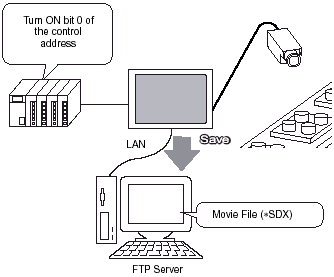
- #SETTING UP FTP SERVER ON HOME NETWORK INSTALL#
- #SETTING UP FTP SERVER ON HOME NETWORK SOFTWARE#
#SETTING UP FTP SERVER ON HOME NETWORK SOFTWARE#
FTP server software is designed to reliably handle hundreds or even thousands of clients but the server’s actual performance is still limited by the server computer and your network. If your FTP server will be handling many clients, consider upgrading your network connection or your server computer. See your FTP server’s documentation and talk to your network administrator for details. For example, FTP over SSH uses the SSH port, which is 22 (default).
#SETTING UP FTP SERVER ON HOME NETWORK INSTALL#
Use the command given below to install VSFTPD.

We will start off by installing it on our system. There are several options available, such as FileZilla, Core FTP, and WinSCP. VSFTPD is the default FTP server for most Linux distributions.
If you’re using a secured FTP protocol (and you really should), you’ll have to open the ports for the secured connections too. First, you need to install an FTP server software. The first thing that you will need to do is create an FTP user account. The default ports for the unsecured FTP protocol are 20 and 21. Talk to your IT team’s network administrator or your ISP about opening the following ports in your firewall: As you click on Finish, you will get an FTP Server being hosted on. This shouldn’t be a problem because there’s FTP server software for Windows, macOS, Linux, and practically any other operating system that connects to the internet.Īlso make sure that the computer has enough disk space to store the files that you and your remote collaborators will be getting and putting.īecause of FTP’s security risks, your network might be configured to block FTP. You will be asked to enter some Authentication details upon clicking Next.Enter these details. Make sure that the FTP server software you choose supports your host computer’s operating system. In the Binding and SSL Settings window, type the IP address of the server. Right-click on Sites, and click on Add FTP Site. Once the IIS console is open, expand the local server. In order to map a new network drive, navigate to ‘Computer > Map. The last section will show all mapped drives connected with your computer. Here you will see three sections Folders, Devices and drives and Network locations. 

On the computer that will host your FTP server, you’ll need a user account with administrator or root privileges to install, configure, and administer the server. Navigate to Start > Control Panel > Administrative Tools > Internet Information Services (IIS) Manager. Open ‘File Explorer’ by pressing ‘Win + E’ keys.







 0 kommentar(er)
0 kommentar(er)
